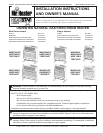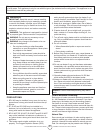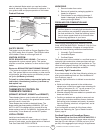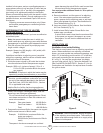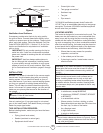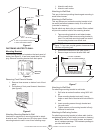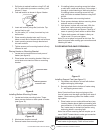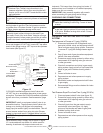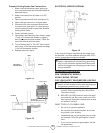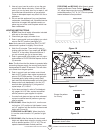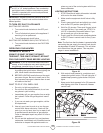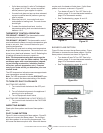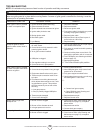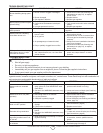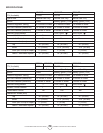
4
Installation Instructions and Owner’s Manual
Unvented Natural Gas Fired Room Heater
installed in that space, and an unconned space as a
space whose volume is not less than 50 cubic feet per
1,000 Btu per hour (4.8 m
3
per kW) of the aggregate
input rating of all appliances installed in that space.
Rooms communicating directly with the space in which
the appliances are installed*, through openings not fur-
nished with doors, are considered a part of the uncon-
ned space.
*Adjoining rooms are communication only if there
are doorless passageways or ventilation grills be-
tween them.
DETERMINING THE TYPE OF HEATER
LOCATION SPACE:
Use this method to determine if you have a conned or
unconned space.
Note: the space includes the room in which you
install heater plus any adjoining rooms with doorless
passageways or ventilation grills between the rooms.
1. Find the volume of the space by multiplying room
length x width x height.
Example: Space size 18ft (length) x 18ft. (width) x 8ft.
(height) = 2592
If additional ventilation to adjoining room is supplied
with grills or openings, add the volume of these rooms
to the total volume of the space.
2. Divide the space volume by 50 cubic feet to deter-
mine the maximum Btu/hr the space can support.
Example: 2592 cu.ft. (volume of space) / 50 cu.ft. =
51.8 or 51,800 (maximum Btu/hr the space
can support)
WARNING: If the area in which the heater may be
operated is smaller than dened as an unconned
space or if the building is of unusually tight con-
struction, provide adequate combustion and ventila-
tion air by the methods described in the National
Fuel Gas Code, NFPA 54/ ANSI Z223.1, Section
5.3 or applicable local codes.
3. Add the Btu/hr of all the fuel-burning appliances
in the space such as, Vent–free heater, Gas water
heater, Gas furnace, Vented gas heater, Gas re-
place logs, and Other gas appliances*
*Do not include direct-vent gas appliances. Direct-
vent draws combustion air from the outdoors and
vents to the outdoors.
Example: Gas water heater 40,000 Btu/hr
Vent Free Heater + 20,000 Btu/hr
Total =60,000 Btu/hr
4. Compare the maximum Btu/hr the space can support
with the actual amount of Btu/hr used.
Example: 51,800 Btu/hr (maximum Btu/hr the
space can support)
60,000 Btu/hr (Actual amount of Btu/hr
used)
The space in the above example is a conned
space because the actual Btu/hr used is more than
the maximum Btu/hr the space can support.
You must provide additional fresh air. Your options
are as follows:
A. Rework worksheet, and the space of an adjoining
room. If the extra space provides an unconned
space, remove door to adjoining room or add venti-
lation grills between the rooms. See Ventilation Air
From Inside Building (Fig. 2).
B. Vent room directly to the outdoors. See Ventilation
Air From Outdoors (Fig. 3).
C. Install a lower Btu/hr heater if lower Btu/hr size
makes room unconned.
If actual Btu/hr used is less than the maximum Btu/
hr the space can support, the space is an uncon-
ned space. You will need no additional fresh air
ventilation.
VENTILATION AIR
Ventilation from Inside Building
This fresh air would come from an adjoining unconned
space. When ventilation to an adjoining unconned
space, you must provide two permanent openings: one
within 12” of the ceiling and one within 12” of the oor
on the wall connecting the two spaces (see options 1
& 2 of g. 2). You can also remove door into adjoin-
ing room (see option3, g 2). Follow the National Fuel
Gas Code NFPA 54/ ANSI Z223.1, Section 5.3, Air for
Combustion and Ventilation for required size of ventila-
tion grills or ducts.
Figure 2.
WARNING: Rework worksheet, adding the space
of the adjoining unconned space. The combined
space must have enough fresh air to supply all ap-
pliance in both spaces.
Ventilation
Gills into
Adjoining
Room -
Option 1
Ventilation Gills into
Adjoining Room - Option 2
12”
12”
Or remove
door into
Adjoining
Room -
Option 3



